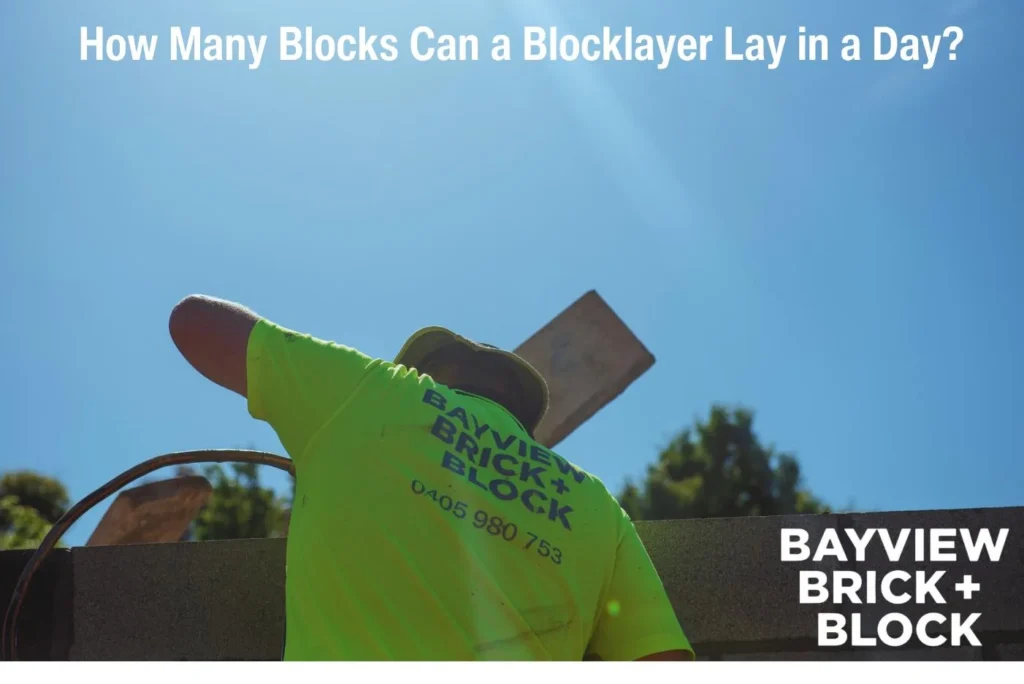AA professional blocklayer can lay between 180 to 200 blocks in a day. This depends on the number of cuts needed, the type of walls to build, and face blockwork or rendered requirement.
In the world of blocklaying, speed really shows off a tradesperson’s skill and experience.
This blog will discuss the factors influencing the number of blocks laid per day in detail.
Factors Influencing the Number of Blocks Laid Per Day
The following are the factors influencing the number of blocks laid per day.
Number of Cuts
When a blocklaying job includes a lot of custom cuts or slices, both vertical and horizontal, it can really stretch out the schedule. Each block must be measured and precisely sliced vertically or horizontally to slot perfectly into its designated spot.
This attention to detail ensures the wall looks good and holds up structurally. Cutting blocks is a skill that takes time but is crucial for getting everything right, especially in intricate designs.

Type of Walls
Curved walls are challenging to build, significantly affecting the construction timeline. They require constant adjustments to ensure the blocks align correctly with the wall’s curve, necessitating more detailed planning and skilled craftsmanship to lay each block perfectly. The type of wall being built impacts the number of blocks laid per day due to the set-out time and cuts needed.
The extra effort pays off, as the smooth, flowing lines of a curved wall can make a space stand out. However, building them takes additional time and precision, resulting in a striking feature that enhances any project but requires careful consideration of the extended construction time.
Face Blockwork or Rendered
In projects where the blockwork will be left exposed (face blockwork), the jointing between the blocks becomes very important. It’s not just about stability; it’s also about aesthetics. Each joint needs to be rolled and finished carefully to ensure a smooth, uniform appearance across the wall.
This meticulous finishing process requires extra time but is vital for achieving a polished look that meets high standards of craftsmanship.
Does Mortar Mixing and Application Affect Blocklaying Speed?
Yes, mortar mixing and application affect blocklaying speed. The consistency of the mortar is critical; too dry and it won’t bond properly, too wet and it might not set correctly, delaying progress.
Skilled tradespeople know that the right mix allows for quicker and more efficient block placement. Furthermore, the technique used to apply mortar also plays a significant role.
Efficient application ensures that each block sits correctly the first time, reducing the need for adjustments and speeding up the entire process. Proper preparation and application of mortar leads to smoother operations and less downtime, which improves overall productivity on site.Want to know how much mortar you’re going to need for a blocklaying project? Read our blog for the details.

